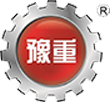Henan Zhonggong Group Invites You to Attend the 9th Changyuan (China) International Hoisting Machinery Exhibition
No. 6, Crane Industrial Park, Changyuan Town, Xinxiang City, Henan Province, China

Henan Zhonggong Group
Henan Tosta Machinery Co., Ltd.
Gantry Crane
Overhead Crane
Light Crane
Port & Container Crane
Launching Gantry Crane
Hoist & Crane Trolley
Crane Components
Electric Winch Overview
EOT Crane
What are the classifications of hoist cranes? This may not be well understood by many non-industry practitioners, which makes procurement a little troublesome. First of all, in terms of structure and performance, it can be divided into light lifting equipment, overhead crane hoist, gantry hoist crane, jib type hoist crane, and hoist crane procurement can be purchasing on demand.
1. Light crane equipment
It is divided into electric hoist, chain hoist, electric chain hoist, miniature electric hoist, etc. Its structure is light, compact, light in weight, small in size, and versatile in parts.
2. Overhead crane hoist
The overhead crane hoist is the most commonly used. The overhead crane hoist is erected on the rails of fixed span pillars in buildings and used in workshops, warehouses, etc. for loading, unloading and lifting work indoors or outdoors. In the factory, it is generally called driving.
3. Gantry hoist crane
The main difference between a gantry hoist crane and an overhead crane hoist is that there are two tall support legs at both ends of the main girder, which run along the track on the ground, generally called a gantry crane in the factory.
4. Boom type hoist crane
Such as portal hoist crane, stationary slewing hoist crane, quayside container overhead crane hoist, etc.
Secondly, if it is divided from lifting machinery, it is mainly divided into two categories: overhead crane hoist and jib type cranes.
Overhead crane hoists are divided into general overhead crane hoist and stacking hoist crane, metallurgical special hoist crane, gantry hoist crane, loading and unloading bridges and cable hoist crane, while general overhead crane hoists are further divided into beam hoist crane and overhead crane hoist.
Boom type hoist cranes are further divided into running boom type rotary hoist crane, fixed boom type hoist crane; running boom type hoist cranes are further divided into tower hoist crane, portal hoist crane, floating hoist crane, etc.
The classification of lifting products is still very detailed, so pay attention to distinction when purchasing, communicate clearly with customer service, and avoid unnecessary trouble.
Hoist crane, commonly known as crane, is very common on construction sites. It is a strong man on the construction site. Tons of construction equipment are hoisted piece by piece. Hoist crane are important construction machinery on construction sites. It looks very powerful, but it is also composed of simple machinery.
First of all, the boom of the hoist crane is equivalent to a lever, it has a fulcrum, power and resistance complement each other, maintain the boom force of the hoist crane, and enable the hoist crane to carry heavy loads. Use the principle of leverage we have learned before.
The tower hoist crane often has a pulley that moves along the boom on its jib, and there are fixed pulleys on the pulley. The gravity on the construction equipment can be shared by several steel ropes.
In order to prevent the hoist crane from lifting heavy objects from tilting forward, there is also a balance arm behind the hoist crane, which is equipped with a proper counterweight, so that it can be as stable as a mountain even if it lifts heavy objects. Large levers maintain the balance of the hoist crane.

Henan Zhonggong Group Invites You to Attend the 9th Changyuan (China) International Hoisting Machinery Exhibition

Henan Zhonggong Group Helped CEEC Project Creating a Number of World Records

Henan Zhonggong Group Manufactures 130 ton Double Girder Overhead Cranes-copy-1713231259